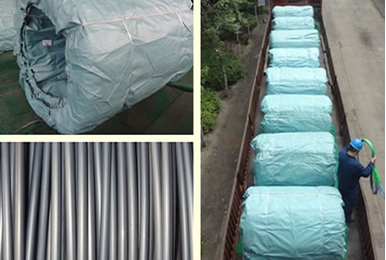Nov . 19, 2024 04:42 Back to list
Understanding Gear Steel Properties and Applications for Optimal Performance
Understanding Gear Steel The Backbone of Mechanical Engineering
In the world of mechanical engineering, gear steel plays a pivotal role in the design and functionality of various machinery. Gears are essential components in countless applications, from automotive transmissions to industrial machinery, and the materials used to manufacture these gears are crucial for their performance and durability. Gear steel is specifically formulated to endure the mechanical stresses and wear that gears encounter during operation.
Gear steel is primarily characterized by its excellent hardness, wear resistance, and toughness. The most commonly used types of gear steel include AISI 4140 and AISI 8620, which are medium-carbon alloy steels. These materials can withstand significant loads, making them ideal for applications involving high torque and power transmission. The incorporation of alloying elements such as chromium, molybdenum, and nickel enhances the steel’s strength and resistance to fatigue, further extending the life of gears.
The heat treatment process is vital in the production of gear steel components
. Through processes such as quenching and tempering, the steel is hardened to achieve the desired mechanical properties. Quenching involves rapidly cooling the steel, typically in water or oil, to create a hardened structure, while tempering relieves stresses and makes the material less brittle. This combination of processes ensures that the gears have the right balance of hardness and toughness.gear steel

Another important aspect of gear steel is its machinability. Gears often require precise geometries and surface finishes to function correctly. Therefore, selecting a gear steel that can be easily machined without compromising its mechanical properties is essential. This machinability often depends on the alloy composition and heat treatment process used, making it imperative for engineers to choose materials wisely based on the specific application requirements.
Furthermore, the performance of gear steel is not solely determined by its chemical composition. Factors such as surface treatment and lubrication play a crucial role in enhancing the longevity and efficiency of gears. Techniques such as carburizing, where carbon is introduced to the surface of the steel, improve surface hardness while maintaining a tough core, effectively optimizing performance.
In conclusion, gear steel is a fundamental material in mechanical engineering that significantly influences the performance and reliability of gear systems. With its remarkable hardness, wear resistance, and toughness, gear steel continues to be a preferred choice for manufacturers aiming to produce durable, high-performance gears. As technology advances, ongoing research into gear steel compositions and treatments will further enhance the capabilities and applications of gear systems in various industries.
-
High-Quality Fe-C Alloy Leading Manufacturers & Spherical Alloy Materials Supplier
NewsJun.10,2025
-
Premium Low Nitrogen Recarburiser Supplier & Manufacturer – High Quality Exporters
NewsJun.10,2025
-
DT4 High-Quality Magnetic Materials Leading DT4 Manufacturer & Supplier
NewsJun.10,2025
-
High-Performance Spring Steel Suppliers Custom Solutions
NewsJun.10,2025
-
Premium SWRCH6A Manufacturer Steel Wire Supplier & Factory
NewsJun.10,2025
-
Premium Mild Steel Wire Rod Supplier & Manufacturer
NewsJun.10,2025
